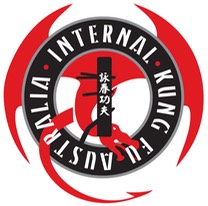The first thing we are taught in Wing Chun Kung Fu is the Siu Nim Tau (Sil Lim Tao) form. For the majority of people, we go through the form and learn the basic movements of the Wing Chun system. On the surface we can see it is a sequence of moves that show us what the movements are in Wing Chun.
If we look at Wing Chun from an internal martial arts perpective, what exactly is the form? What does it do to us? More importantly, what can we achieve from practicing it?
If you ask anyone who practices Wing Chun, you will get many answers. One of the main answers, and clues is that most people will agree that the form is not like a "Kata", and it is not a fight against an imaginary opponent. It is non-aggressive in its nature. Most will agree it shows the moves that are used in Wing Chun. It shows the basic stance, and trains you to be in that stance.
So why have this as a form? Why not just teach all these seperately? Perhaps it is just so you can practice them all in one go, to help with memory? I think all this is true. However I have a different perspective from an Internal perspective.
So what are the Forms for?
The best I can liken a real "Form" to is perhaps singing. Before you can start singing Opera songs, which require great vocal strength and technique which very few can do, one must train the voice with excersizes. You cannot go straight into singing these songs, it is impossible for almost anybody. What you do in the beginning is you train scales, that is improving your voice to understand different notes. You also train singing vowels to open your lungs, throat, tongue, etc, to create a deeper sound. Once you have progressed in this, you then begin singing different sets of training songs to further improve your voice, some songs may focus on "trills", others may focus on changing from high to low quickly, others are designed to further open your voice up.
These are like forms for singing. The more your practice, the more you improve, yet you are yet to sing an opera song until you are capable. You do not practice the songs you want to sing to improve, you practice the forms. However, once you have these skills, you can then practice the song, or you will not get that right either.
Therefore, you will never be able to sing an Opera song unless you have the strength and skill to perform one, and these skills are not gained by practicing Opera songs. You will merely be performing it incorrectly over and over. Similarly with Wing Chun, without the forms, you will never be able to perform your techniques against a fully resisiting opponent. You will merely be doing movements that look like Wing Chun, without the skill behind them.
So how does this relate to the Wing Chun forms?
In my opinion, the first form in Wing Chun is to train your body internally and externally. Examined closely, many of the movements teach you how to move your joints, how to relax and fill up your arms and how to keep this feeling on until the end of the form, where the movements get more complex and faster.
Just as the singing forms train your voice, so Wing Chun forms train your relaxation, joint opening, linking the waist, spine lifting and mental thinking in each movement. It also trains the bones and tendons, and to relax the muscles. After a while in training, one can notice the difference in body structure. If it is done correctly, you will notice a significant increase in power and balance, however it will feel like you are using much less effort.
If I link this back to the analogy above, before you can practice using the techniques in Wing Chun, they must be strong and capable of sustaining great force. Once this has occured, then you can use them in Chi Sau and in techniques as they will actually work. Then you can practice fighting and other drills if you so wish. Just as you can't sing opera without the singing forms, so to you cannot properly use Wing Chun without creating the proper structures in your body and arms, joint openings that make the movements in Wing Chun work.
One clue lies in the middle of the first form where you strike down on each side, behind you and in front of you, but down. These are not movements that are useful, and are mostly never used. What are they doing in the form? They teach the student how to relax the shoulder blade down, to open the shoulder joint in any direction (not just forward), open the wrist and elbow in any direction, and to help the mind move through the arms in different directions. These movements help you be strong in any situation, there is no downward palmstrike technique. Repeated practice will create a trong structure that cannot be overcome by the muscular force of an opponent.
In conclusion, it is my strong belief that the form is designed to train the mind, tendons, bones, to relax the muscles, train the linking of the waist to the stance, lifiting the spine and opening the joints of the body. At the same time it teaches you how to do this while doing the movements of the Wing Chun system. Repeated practice under the right instruction develops an enormous amount of force from the body with very little effort. This is the foundation of the internal Wing Chun Kung Fu system.
Here is a video of someone who has mastered the aspects of the Siu Nim Tau Form. Power like this has to be felt to be believed.
Phillip Warburton
